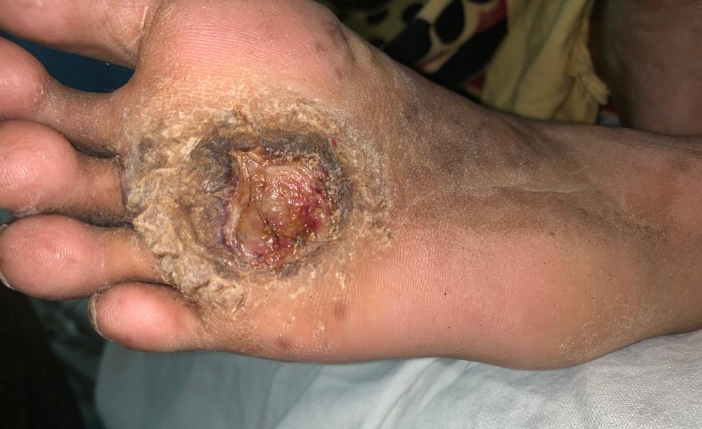bimonthly internal assessment of intern
I have been given these two cases to understand and analyze as part of my End Posting Examination.
𝙌𝙪𝙚𝙨𝙩𝙞𝙤𝙣 --- 1 :
1) The complete diagnosis is a 45 year old woman with Nephrotic Syndrome secondary to Diabetic Nephropathy characterized by Anasarca. The anatomical diagnosis is Anasarca and the etiological diagnosis is Nephrotic Syndrome secondary to Diabetic Nephropathy.
2)
- Azotemia is the accumulation of nitrogenous based waste products in the blood. In this case, Azotemia may occur due to acute kidney injury caused by Diabetes. Damage to the glomeruli or renal tubules can lead to decreased glomerular filtration rate which can cause Azotemia.
- Anemia: During her first day in the hospital, a CUE was done which showed 4-5 RBCs/HPF which means there is hematuria to a certain extent. This may be a contributing factor to cause anemia. However, she may be having Iron Deficiency anemia due to kidney injury. Erythropoietin is produced in the peritubular capillary bed of the renal cortex therefore usually Chronic kidney injury decreases Erythropoietin production. Erythropoietin is responsible for producing mature RBCs in the bone marrow or Erythropoiesis and lack of produces anemia.
- Hypoalbuminemia: This occurs to severe proteinuria that can be seen in the CUE. Damage to the basement membrane leads to decreased GFR and proteins are lost in urine therefore decreased serum albumin levels.
- Acidosis: This may occur due to decreased renal ability to excrete acids in her body and decreased bicarbonate reabsorption.
3) NAHCO3 for correction of acidosis
POTKLOR syrup for hypokalemia
OROFER-XT for anemia correction
INSULIN AND ANTI HTN MEDICATIONS FOR DM and HTN
LASIX to decrease volume overload
CALCIUM to treat hypocalcemia secondary to CKD
SODIUM BICARBONATE IS INDICATED IN NORMAL ANION GAP METABOLIC ACIDOSIS, aspirin and phenobarbitone overdoses
AND IT IS CONTRAINDICATED IN MANY SITUATIONS DUE TO ASSOCIATED RISK OF HEART FAILURE , Hypernatremia, metabolic alkalosis, seizures, Tetany, sodium retention, peripheral edema.
4) SEVERE SOB with METABOLIC ACIDOSIS
5) primary : Minimal change disease, Focal segmental glomerulosclerosis, Membranous nephropathy.
Secondary : DM, SLE, HIV , Viral hepatitis, malaria, amyloidosis, Sarcoidosis, Drugs : Nsaids, gold, pencillamine Cancer: Hodgkin's and non Hodgkin's, solid tumours of GIT, RCC and lung.
6) PATIENT MAY RECOVER COMPLETELY OR SHE MAY NEED MAINTENANCE HEMODIALYSIS AND KIDNEY TRANSPLANT IN FUTURE DEPENDING ON AGE , GENETIC FACTORS , ASSOCIATED COMORBIDITIES
7) HYPERACTIVATION OF RAAS IN RESPONSE TO RENAL HYPOXIA RESULTING IN VOLUME OVERLOAD WHICH MAY CONTRIBUTE TO THE DEVELOPMENT OF HFpEF.
8) Placebo would not be very effective since the anemia has an organic cause and her hemoglobin increased from 6.6 mg/dl to 8.5 mg/dl due to Orofer and dialysis over the span of 5 days. The placebo effect will not be seen in this patient because anemia is not the primary cause of her symptoms.
9) CKD-AQ is a very useful tool assess the severity and frequency of symptoms of anemia in CKD however it cannot be translated into Telugu therefore it may not be very useful in this area.
𝙌𝙪𝙚𝙨𝙩𝙞𝙤𝙣 -- 2:
1) This 58M had history of fever with cought and elevated tlc with indiacates renal acute kidney injury.As well there is no albuminuria,no edema.
He may not need MHD and his outcome may be better with conservative management.
No RPD changes
So most probably it is AKI.


Comments
Post a Comment